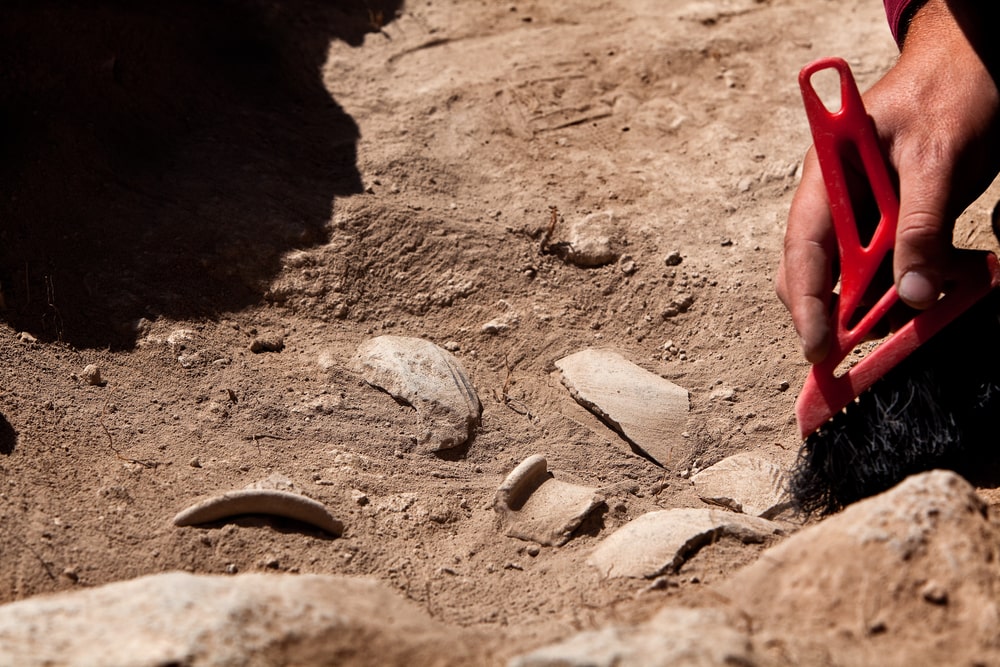News - Construction News
Infrastructure and archaeology: the benefits of early partnership

Large infrastructure projects are by their very nature complex, requiring a vast amount of input from a variety of stakeholders and specialisms, from ecology to engineering. Archaeology may only form a small proportion of a wider project, but it can cause serious problems for schemes where contractors do not afford it the proper attention at the early planning stages.
Abigail Bryant, Consultancy Director at Wessex Archaeology, the UK’s market-leading provider of archaeological and heritage services, offers some insights into the benefits of incorporating archaeology and heritage assessment and mitigation into the early planning stages of major infrastructure projects, avoiding costly delays, logistical problems and reputational risk.
Early consultancy
The complexities of the legislation and guidance around planning or other permissions for a development project are heightened for major infrastructure projects. Contractors who recognise the value of experienced consultancy reap the rewards of early mitigation strategies that work in partnership with engineering and construction teams and ultimately ensure a smoother project delivery.
Chapter 16 of the National Planning Policy Framework (NPPF) and its accompanying guidance outlines the requirements and responsibilities on developers around the historic environment. The emphasis is on understanding the significance of the resource and actively looking for ways to avoid and/or minimise harm to that significance through design and mitigation in the pre-application phases. For all developers, and particularly those undertaking Nationally Significant Infrastructure Projects (NSIPs), this means that the plan for any heritage or archaeology on a proposed site or route should be a key part of the initial project design.
It is of benefit to all development projects to have a good, early-stage understanding of the unique interrelationship between their scheme and historic environment planning policy and legislation. Historic Environment Consultants can help to develop a strategic, cost-effective and flexible approach which balances the need of the resource with other considerations at this stage. This would usually include initial non-intrusive research and investigations to identify the known and potential heritage assets areas of archaeological significance to try and avoid in scheme planning, to ensure that any more detailed and intrusive archaeological work is focussed where it is needed. This approach helps to control timescales and costs and works to reduce risk to the significance of the historic environment resource.
The results of these assessments are often reported in an Environmental Impact Assessment or similar and great benefit is derived from embedding the Historic Environment consultants within he wider environmental consultancy team on a project.
This early approach has enabled a successful mitigation strategy on the East Midlands Gateway project, carried out by Wessex Archaeology on behalf of SEGRO. Desk-based assessments (DBAs), geophysical surveys and trial trenching took place well in advance of any development, and a strategic plan was developed to allow mitigation works and development to coincide on site once the project was given the go-ahead.
Work carried out by our team in advance of the construction of Terminal 5 at Heathrow on behalf of BAA, for example, also demonstrated this forward-thinking approach. From the initial pre-planning phase, BAA were fully supportive of a ‘front-loaded’ strategy that required the development of an infrastructure to support the archaeological process, recognising that this represented an opportunity to plan effectively and offered excellent value for money. The approach of the Terminal 5 project was recognised by the sector with a prestigious British Archaeological Award for Best Project in 2008 and the interactive digital archive created as part of the project was highly commended in the award for ‘Best Innovation’.
Continued collaboration
Early collaboration has the additional advantage of ensuring that all parties are aligned for the project delivery phase. Once the mitigation strategy has been agreed by stakeholders and granted by the planning authority, it becomes a smooth process for the archaeological consultancy to deliver against the planning conditions if they have been party to their design. For Wessex Archaeology, this holistic approach is key. Offering services from project start to finish means that the Consultancy team can hand over smoothly to the fieldwork functions to carry out the next phases of archaeological work, including fieldwork, and similarly on to dissemination and engagement if required.
Having an understanding and appreciation of the commercial pressures of developers is an important factor in a successful collaboration, and this starts with communication. At the early phases, access and ecological issues can cause delays to beginning archaeological works – and when those works are likely taking place within or just ahead of the main construction programme, the risk of knock-on delays to the project are great. In the current project for Laing O’Rourke / Murphy Joint Venture (LMJV) on HS2, for example, the largest construction and archaeological project ever run in the UK, successful collaboration between Wessex Archaeology and LMJV from the initial project design phase has been crucial to avoiding unnecessary delays and therefore high costs later down the line.
Key to this successful working relationship with LMJV is regular meetings and trust between the site teams, Wessex Archaeology Project Manager, Logistics Officer and the LMJV Project Managers, and land access and ecological teams. It is crucial that a common language is spoken between construction and archaeological personnel. Establishing these relationships at an early stage and having designated personnel to match the roles of the client has meant in this case that communication is good, misunderstandings are rare, and deadlines are met.
Ongoing communication through the project phases is crucial, as mitigation designs evolve for different phases of a scheme. This has been a built-in feature of the mitigation plan for Rossington Inland Port, which we carried out on behalf of CgMs Consulting, and which allowed for the archaeology to be carried out in manageable chunks over several years as the project evolved.
Reducing risk
Ultimately, early engagement with archaeology is about managing and reducing risk; for developers and for the historic environment. Encountering buried archaeology and built heritage is something that can be planned for; it is a static feature that can usually be discovered through early, non-invasive investigation. The risks of ignoring or not seeking professional advice at an early stage on how to deal with it can include unexpected delays, costs and damage to relationships with project financiers, planning authorities and the public.
One large-scale infrastructure project in the South West saw costly delays as they started encountering unforeseen archaeological remains after work had begun on site, for example. We were commissioned after the project was halted to create a plan for mitigation. It was agreed that an initial assessment through geophysics and evaluation trenches would be undertaken, which discovered the remains of an entire Romano-British settlement on the site. The project was under commercial pressures to complete to tight deadlines, with heavy potential fines if not met, so a time-effective approach was necessary. Our team worked closely with the client and the planning authority to design a strategy that fitted into the work being undertaken on site, working together to enable the development to continue.
With high profile infrastructure projects, a lack of planning for archaeological risk can create a difficult situation to justify under public scrutiny. However, a proactive approach can be turned into a commercial advantage and encourage positive public engagement with a scheme. Wessex Archaeology provided consultancy advice to the Olympic Delivery Authority and its principal contractors from the beginning of the Olympic Park project, for example.
In 2005, as soon as London won the bid to host the 2012 Games, a multi-disciplinary programme of archaeological and historical research began. The aim was to reveal and record the cultural heritage of 246 hectares of the Lower Lea Valley before the bulldozers moved in and the site was transformed into the Olympic Park. Our challenge was to analyse the data – geoarchaeological, palaeoenvironmental and archaeological, from documents, maps and building recording, as well as from oral history accounts of local residents – and to make the unique story of the site, spanning some 13,000 years, widely accessible through print publications, community engagement and other media – all to a tight deadline. Our multi-disciplinary team worked together to deliver the works, then disseminate the results to the public through ther press, digital media, social media and a popular booklet which was handed out to the public during the Games.
Developer-led archaeology can be a streamlined, cost-effective process that aids planning consent and sustainable project delivery. It’s a key part of the planning process and ensuring early collaboration with a quality archaeological and heritage service, like Wessex Archaeology, ensures understanding of the historic environment implications of a development, provision of sound advice to clients on what to do with it, and a proportionate plan for how to manage this risk effectively.
If you would like to read more articles like this then please click here.
There is still time to register for the flagship infrastructure exhibition at the NEC, 30thApril 2019: UKIS 2019
Register for your delegate place now: UK Infrastructure Show 2019.
Related Articles
More News
- Homes England acquires Ripon Barracks from MOD
3 Jul 25
Homes England has acquired land at Ripon Barracks which will be developed into 1,300 new
- University joins forces to address critical construction and housebuilding skills gap
2 Jul 25
The University of Salford is collaborating with Cube Thinking to support Barratt Homes in bridging the shift in skills requirements.
- Merit Appointed to NHS Shared Business Services Modular Building Framework
1 Jul 25
Merit is pleased to announce its successful appointment to the NHS Shared Business Services (NHS SBS)






